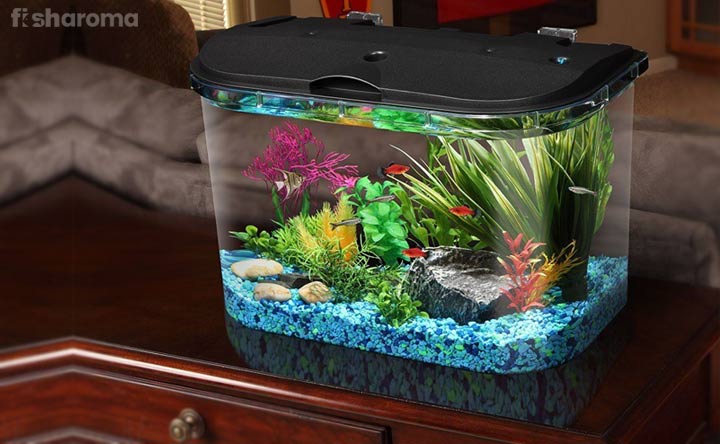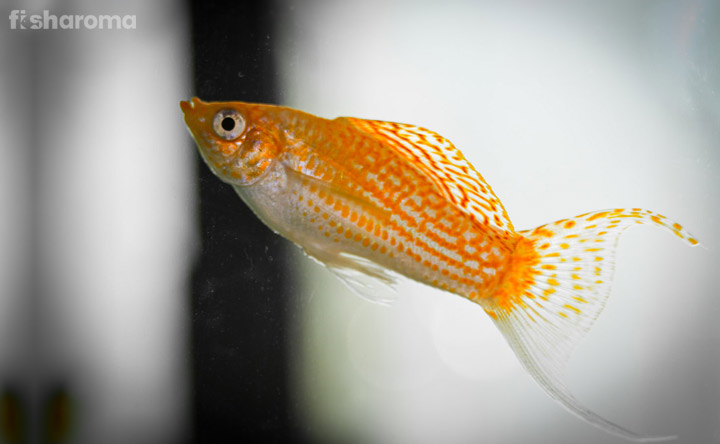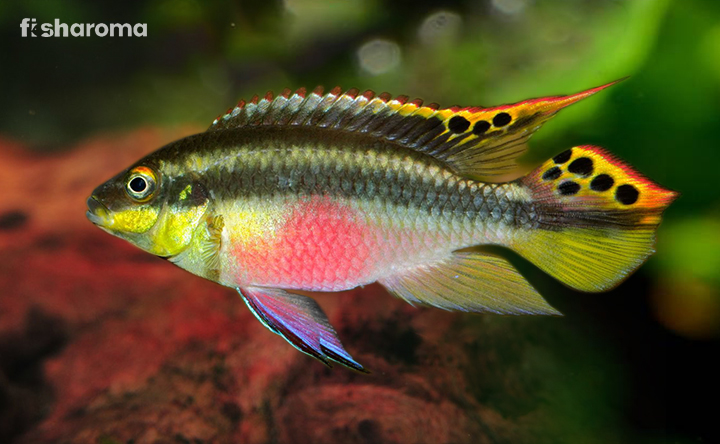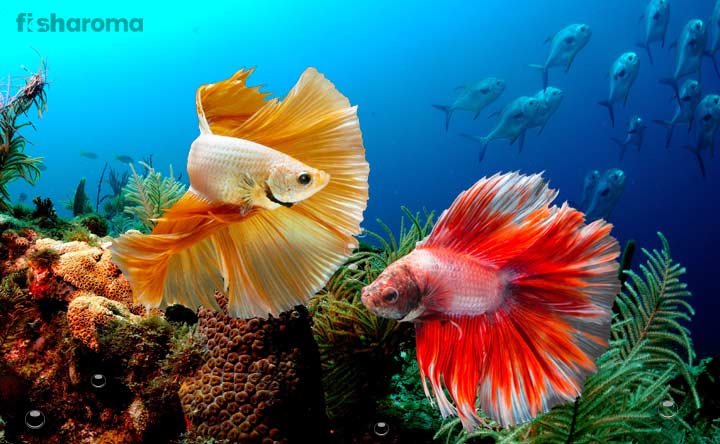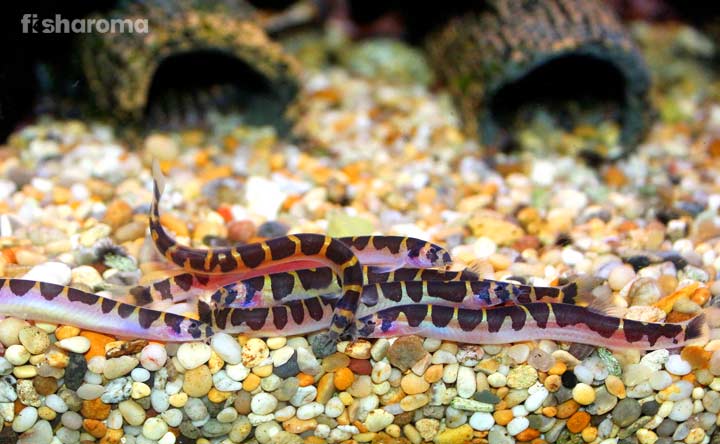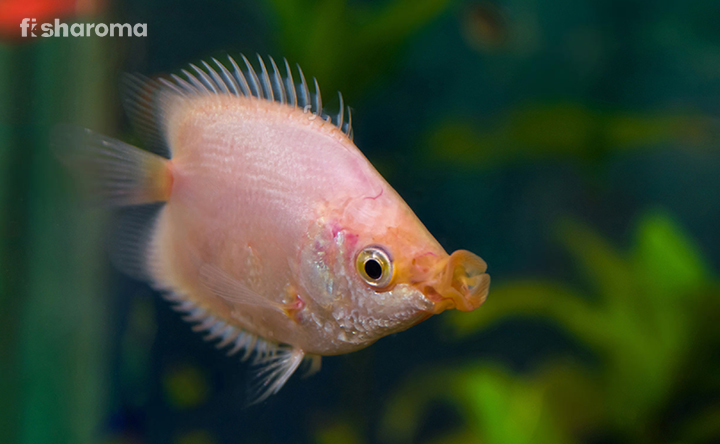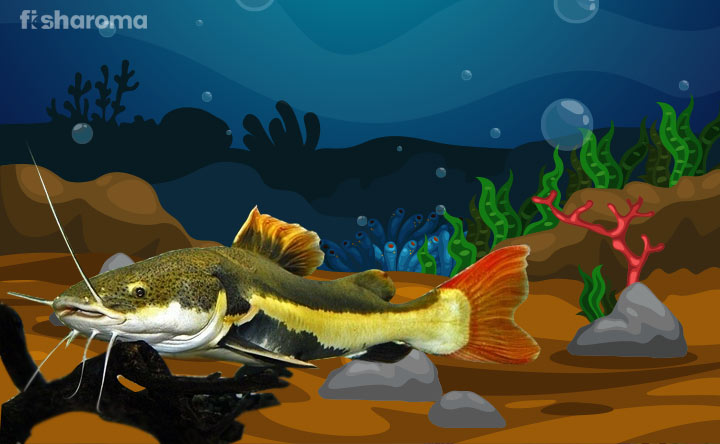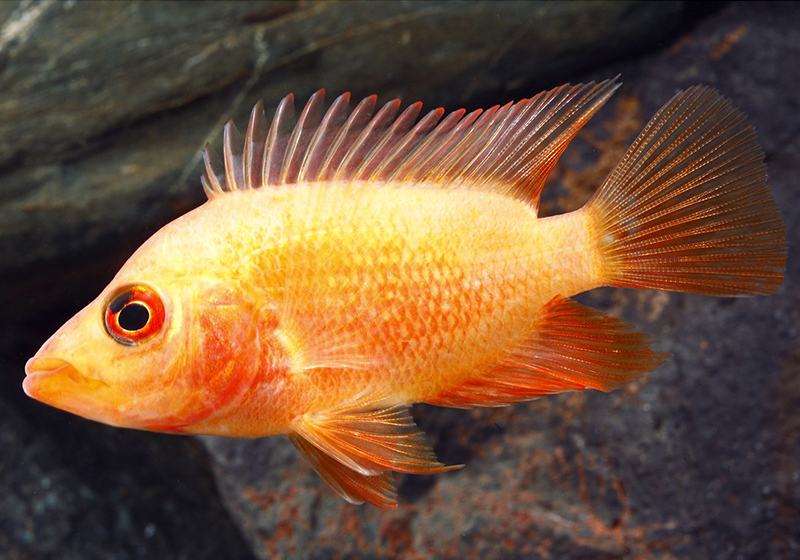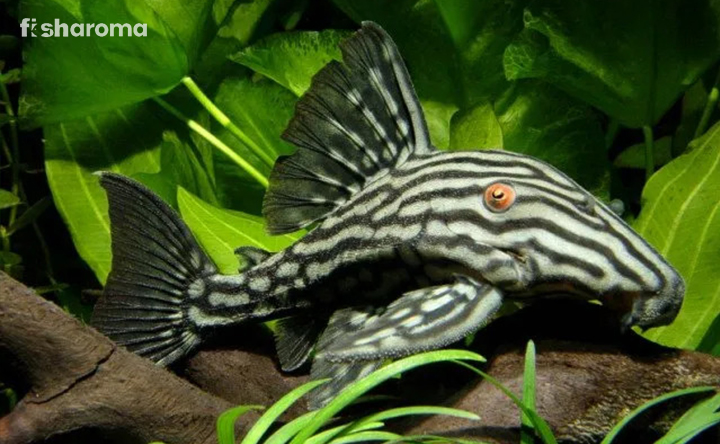Harlequin Rasbora – Know How to Take Care of Your New Pet
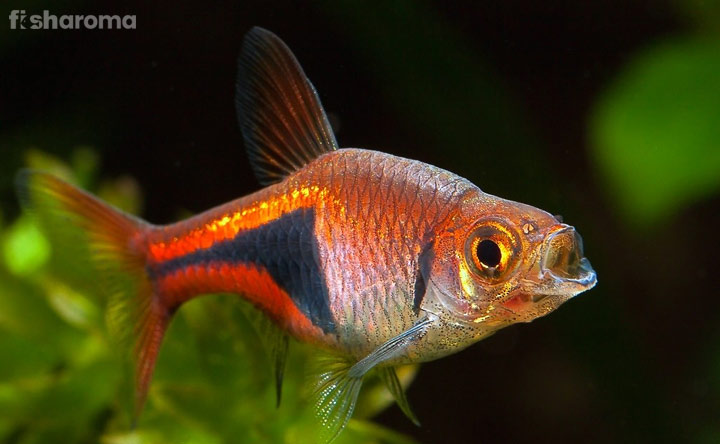
- Origin & Habitat of Harlequin Rasbora
- Appearance of Harlequin Rasbora
- Behaviour of Harlequin Rasbora
- Lifespan of Harlequin Rasbora
- Diet of Harlequin Rasbora
- Tank Requirements for Harlequin Rasbora
- Water Type for Harlequin Rasbora
- Compatibility of Harlequin Rasbora
- Breeding of Harlequin Rasbora
- Harlequin Rasbora Diseases
- Summary
To witness the beauty of a school of fish swim from one end of an aquarium to another is unparalleled. Not only do they add to the aesthetics of your tank, but they also help in creating a social community inside the tank for your fish, thereby ensuring they feel more in their natural habitat. One such fish that you can pet is the Harlequin Rasbora. Small in size, magnificent in appearance, and non-demanding by nature, they are going to keep you mesmerized with their movement all day long. Sounds tempting, right? So, without further ado, let’s get straight into the care guide of this beauty.
Key Specifications of Harlequin Rasbora
Before getting into the intricate details of this species, take a look into its key specifications.
| Scientific Name | Trigonostigma heteromorpha |
| Family | Cyprinidae |
| Origin | Southeast Asia |
| Size | 2” (5 cm) |
| Color | Silver with patches of black and orange |
| Care Level | Easy |
| Lifespan | 5-8 Years |
| Temperament | Peaceful |
| Compatibility | Moderate |
| Tank Size | 20-Gallons |
| Diet | Omnivore |
Overview
A member of the Cyprinidae family, Harlequin Rasbora (Trigonostigma heteromorpha) is a freshwater tropical fish that belongs to the Rasbora genus. Counted among the most popular Rasbora species worldwide, they are hardy and peaceful by nature. These two aspects clubbed with the spectacle that they create when they swim together makes them extremely popular among aquarium enthusiasts.
The term ‘Heteromorpha’ in its scientific name has been derived from the Greek language that translates to “differently shaped”. This is because how differently shaped their body is from the other members of its genus. On the other hand, its common name ‘Harlequin’ has been inspired by the comic character Harlequin, whose costume bears resembles with the patches on the body of this fish.
Origin & Habitat of Harlequin Rasbora
Native to Southeast Asia, specifically across the Malay Peninsula region in Singapore, Malaysia, Thailand, and Sumatra; you can find this fish inhabiting streams, rivers, and swamp forests. The water that they live in is characterized by a high concentration of dissolved humic acid and low mineral content. It is the type of water that is usually found flowing through peat swamp forests. In other words, the water resembles the blackwater habitats of South America.
Presence of tannins in the water usually gives it a yellowish appearance. They prefer high vegetation in their habitat which provides the much-needed shade that they need.
Although in the wild they live in soft, slow-moving, calm, low acidic and neutral water, most Harlequin Rasboras that are sold in the market can adapt to a wide range of water because they are generally raised in fish farms.
Appearance of Harlequin Rasbora
Harlequin Rasbora has a lozenge-shaped body with a tall mid-section that narrows down towards the mouth on one end and the forked caudal fin on the other. Females have a rounder abdomen than their male counterparts here. Dorsal, anal, pelvic fins along with the aforementioned caudal fins are present in this species.
Size of Harlequin Rasbora
Being one of the smaller aquarium fish, Harlequin Rasboras grow to a size of 2” (5 cm) in their fully matured stage.
Color of Harlequin Rasbora
With a silver body along with tinges of orange, Harlequin Rasbora has a prominent black patch with a blue tint on the rear half of its body. As described above, this black patch is what gives it the name Harlequin since it is similar to the black pattern found on the classic outfit of the comic character Harlequin.
The black patches are larger in size in case of the males. This patch is in a triangular shape and starts from the dorsal fin and ends at the base of the caudal fin.
Upon reaching adulthood, they develop a very subtle golden metallic sheen to their body, which further alludes to their beauty. The fins are darker orange in color and they vary from individual to individual depending on the stress level of the fish, tank condition and the population they were bred from. In some, it could be pale pink while in some it could even be bright red.
In a few species, there are purple highlights just above the black patch. Despite most of them being in silver color, on rare occasions some are seen with a prominence of one specific color on their body other than silver, wherein, they are known by that specific color, such as Gold Harlequin Rasbora or Black Harlequin Rasbora or Blue Harlequin Rasbora.
Behavior of Harlequin Rasbora
Peaceful by nature, they are not someone who would pick on or nip their tankmates. In fact, they are mostly the victims of the hostile activities of aggressive fish.
This fast-moving species loves to spend time swimming among the plants and hiding in leaves; and prefer open spaces for swimming. As we have mentioned earlier, this is a shoaling fish that also display schooling behavior. Therefore, despite not being the most spectacularly looking fish out there, they create a magnificent imagery when they swim together.
Lifespan of Harlequin Rasbora
Although the lifespan of Harlequin Rasbora has not been systematically determined, it is believed that they live up to 5-8 years. However, in captivity, they usually don’t live more than 3-4 years.
Diet of Harlequin Rasbora
Omnivore by nature, they are pretty undemanding when it comes to their food preferences; which is evident by the fact that they are open to almost all types of live and frozen food. You must always thaw the frozen food before putting them in the tank.
An ideal diet of Harlequin Rasbora should contain the following:
- Daphnia (Live & frozen)
- Brine Shrimp (Live & frozen)
- Zooplankton
- Mosquito Larvae
- Algae Wafer
- Blanched Spinach
- Blanched Lettuce
- Plant Detritus
They also feed on small crustaceans in the wild, which you can provide them as long as they are miniature in size since Rasboras themselves are a tiny fish.
You can also feed your Rasbora artificial food, in the form of pellets and flakes. The following options are readily available in the market that can be used as an alternative to live food.
- API Fish Food Pellets
- Zoo Med Spirulina
- Hikari Micro Pellets
- Hikari Micro Wafers
It is important to keep the food particles small so that your Rasboras don’t choke on them. This is why it is better to avoid Blackworms or Bloodworms since they are a bit larger for them to swallow.
Feed your fish twice a day and provide that much food to them which they can eat in 3-4 minutes. This will help you to get a grasp on their feeding cycle and also avoid any situation of overfeeding.
With their diet under control, let us bring our focus into creating a suitable tank for them.
Tank Requirements for Harlequin Rasbora
The tank where you host your Harlequin Rasboras must have the following features.
Tank Size
Since Harlequin Rasbora is a shoaling fish, you can’t keep them alone. Therefore, despite this fish being tiny individually, you would need a moderate-sized tank to keep a bunch of them together.
Keeping one Rasbora per two gallons of water is ideal; with the numbers pointing to a 20-gallon tank, if you are keeping eight Rasboras together with the additional four gallons serving as free space for them. Remember that the larger the size of your tank will be, the better display of the schooling would be.
Filter
Although they don’t require a strong filtration system, having a basic air-powered sponge filter or peat filter would help to keep the water clean and aerated. Since low current is what they need, you don’t have to look for some high-end filter for them.
Nature of Lighting
Moderate to subdued lighting is recommended for this freshwater fish since bright light would force them to go hiding. Furthermore, a dim environment inside the tank would help pop their color even more.
Presence of Flora
Similar to a dim environment, the presence of heavy vegetation will also help in showcasing the colors of a Harlequin Rasbora. Having said that, don’t clutter up the entire aquarium with plants in a way that blocks their swimming area.
Having broad-leaved plants on the sides and back along with some floating plants on the surface will act as a shelter, hiding spot and provide the much-needed shade from light to them.
Substrate
This tropical beauty is not too finicky about the substrate that you use in your tank. In fact, the choice of substrate here would be governed by the type of plants you keep in.
If you want to use plants in your tank (which is recommended), then go for gravel-based substrate since it would help the plants to easily root. Else, you can go for sandy-substrate as well. We advise you to go for play sand instead of construction sand. Whatever substrate you pick, just make sure it is dark in color to go with the dim ambiance.
Ornaments
Since this species loves hiding, providing aquatic caves and rocks will help in serving hiding spots to them.
Cleaning Method
Cleaning the tank on a monthly basis would help ensure that the ecological environment inside the tank is healthy, which would add more years to the life of your Rasbora. Try and avoid chemical or soap-based products while cleaning the interiors and ornaments of the tank. Plain running water along with a soft cloth would get the job done. You can use a gravel vacuum to clean out the substrate.
Water Type for Harlequin Rasbora
The water that you are going to use in your Harlequin Rasbora tank must meet the following requirements.
Temperature
Harlequin Rasbora prefers slightly warmer water based on the habitat that it is from. Therefore, the temperature of the water should be 72-81° F (22-27° C). Install a water heater to ensure that this temperature is always maintained.
pH Level
The pH level of the water should be 6-7.8, which is slightly acidic to neutral. Check the pH level at least once in a week with the help of a pH testing kit.
Hardness
The general hardness of the water should be within 15 dGH.
Replacement Procedure
You can replace the water of your tank in three different ways. However, remember not to replace the entire water content altogether since that would kill off the beneficial bacteria that are needed for maintaining a healthy environment inside the tank. Allow the following table to serve as a guideline for the water replacement procedure. Try to stick with any one of the following replacement procedures.
| Time Interval of Water Change | Percentage of Total Water to be Replaced |
| Weekly | 10% |
| Bi-weekly/Fortnightly | 20% |
| Monthly | 40% |
The new batch of water that you are going to add to the tank must have the same temperature, pH level and hardness as that of the old batch of the water.
Compatibility of Harlequin Rasbora
Harlequin Rasbora is a peaceful species and do great in a community tank as long it doesn’t house any aggressive species. They love the companionship of their own kind, which is why you need to keep a bunch of them together.
You can keep as many Rasboras together as long as you provide two gallons space for each of them along with a bit of additional free space. In fact, keeping this fish alone is going to cause them stress. A minimum of four Rasboras have to be kept together.
Suitable Tankmates of Harlequin Rasbora
Peaceful, non-aggressive species that doesn’t have a tendency to pick on or harass small species are ideal tankmates for a Harlequin Rasbora. Some of them are as follows.
- Cherry Barb
- Dwarf Gourami
- Guppy
- Corydoras Catfish
- Danio
- Tetra
- Zebra Loach
- Hatchetfish
- Molly
- Platy
They are also compatible with various invertebrates such as small shrimps and snails.
Unsuitable Tankmates of Harlequin Rasbora
Avoid keeping Harlequin Rasboras with larger, aggressive and semi-aggressive species since they may get devoured by them apart from getting nipped and harassed.
- Betta
- Clown Loach
- Cichlid
Breeding of Harlequin Rasbora
Breeding of Harlequin Rasbora is difficult, but not impossible. So, if you are ready to put in a lot of effort, you may be successful at breeding them.
To encourage spawning, you need to put them in a separate dimly-lit tank of soft water whose temperature should be 80° F (26° C), pH level at 5.3-6, and general hardness within 1.5-2.5 dGH. You must provide protein-rich food such as Daphnia and Mosquito Larvae to them. The separate tank must also contain live plants, the importance of which you will get to know later in this section.
The breeding tank should be long and shallow, with a low water level of 6” (15 cm).
Plants such as Aponogeton and Cryptocoryne are ideal in this scenario. For seven days continuous prior to breeding, you must feed them live/frozen food exclusively to prepare them better for the upcoming spawning.
For initiating breeding, you need to keep two females for every male. The ritual usually begins with the male “dancing”, as in vigorously moving around the females to entice them. This is followed by the female(s) laying her eggs on the leaves in the aquarium, at the sight of which, the male joins her to fertilize the released eggs.
After a period of 18-24 hours, the eggs will hatch, and the fries will hold on to the leaves for one more day after which they go out to swim on their own. During this stage, they must be fed only Infusoria. Starting from the second week of their birth, you can feed them baby Brine Shrimps or other finely chopped flake food.
Remove the parents from the breeding tank soon after the eggs get fertilized, since they may end up eating their own eggs.
Harlequin Rasbora Diseases
Being the hardy fish that they are, Harlequin Rasboras generally don’t suffer from a lot of diseases. However, in absence of regular water changes and an unclean environment, they may suffer from Ich, which is identified by white spots all over their body, Fin Rot, which is marked by torn or rotten fins, and Dropsy, which is marked by a fluid build-up which causes swelling.
In all of these circumstances, all you need to do is maintain cleanliness in your tank and provide nutritious food to your Rasbora, although consulting a veterinarian is also ideal in this scenario.
Quarantining the fish before introducing them to the tanks as well as quarantining everything else (substrate, plants, ornaments) before putting them into the tank greatly removes the chances of your fish contracting any disease.
Interesting Facts about Harlequin Rasbora
- Despite being a soft water species, Harlequin Rasbora can live in hard water if given enough time to acclimatize. However, it won’t breed in hard water.
- This fish was first brought to Europe from Singapore in the year 1907.
- They are the only egg-scattering Rasboras in their genus.
Summary
Harlequin Rasboras are a great choice of freshwater aquarium pet since they are peaceful and hardy by nature and require minimalistic effort from your end to thrive well. Apart from their breeding aspect, which is a bit trickier, you don’t have to put a lot of effort into meeting their demands. The only condition with this species is that you have to keep them in groups since they are a shoaling fish. In fact, their beauty is elevated when they swim together, which creates a splendid view in your tank.
A Look into Our Other Aquarium Care-Guides:
If fishkeeping is what interests you, then you might want to check out some of our other guides.
- Aquarium Mistakes & How to Avoid Them: When you are setting up an aquarium for the first time, you are bound to make mistakes. But fortunately, our care guide will help you in avoiding them altogether.
- Best Algae Eaters for Your Aquarium: Tired of constant algae bloom in your fish tank? Maybe introducing someone in the tank might help you in this regard. Read on to find more.
- How to Set up a Fish Tank: If you are setting up your tank for the first time, we have got you covered. Take a look at the things you need to keep in mind while building the fish tank of your dream.

